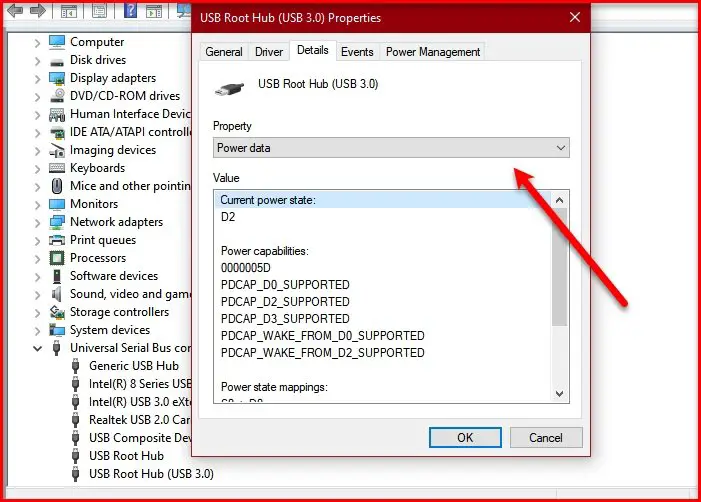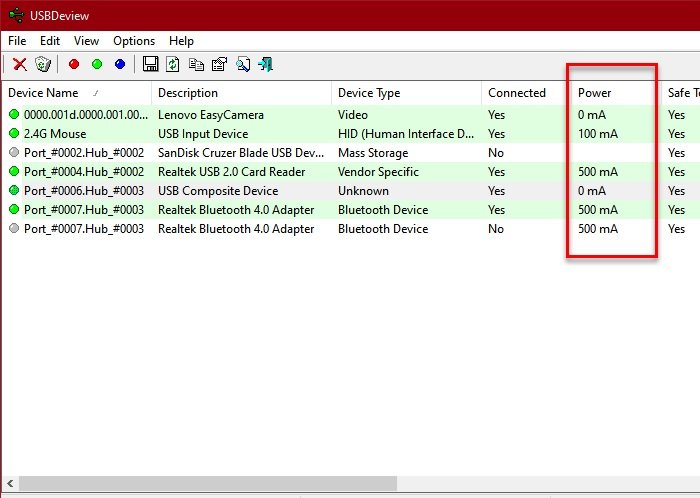Most of us blame the cable or adapter for slow charging or slow data transfer. Only the techiest person among us, questions the Power Output of USB Ports. If you are one of them and you want to know how to check the Power Output of USB Ports on Windows 11/10, this post is for you.
How to check USB port for Power on Windows 11/10
There are two methods by which you can check the Power Output of USB Ports on Windows 11/10:
- By Device Manager
- By Third-Party application
Let us talk about them in detail.
Using Device Manager

With the help of Device Manager, you can check the Power Output of USB Ports on Windows 11/10.
- To do that launch Device Manager by Win + X > Device Manager.
- Expand Universal Serial Bus controller, right-click on “USB Root Hub” or “Generic USB Hub”, and click Properties.
- Go to the Details tab and from the Property section select Power data.
- Now, you can see the Power Output of your USB Port from there.
- You will see something like “D0”. The higher the number, the lower the Power Output of your USB Device.
For example, in this screenshot, the “Current power state” is D2, which is somewhere in the middle.
FIX: Power surge on the USB port error.
Using Third-Party application

If you want to know the exact Power Output rating in Ampere then go for USBDeview, a third-party application to manage your USB devices.
Download and install the application, and then launch USBDeview and see your USB Port’s Power Output from the Power section.
You may want to use the horizontal slider to reach the Power option.
This can be a bit frustrating if you are checking Power Outputs of multiple ports, so, you can either drag the Power option or double-click on a specific port to know its Power Output.
Hopefully, we have helped you check the power output of USB ports on Windows 11/10.